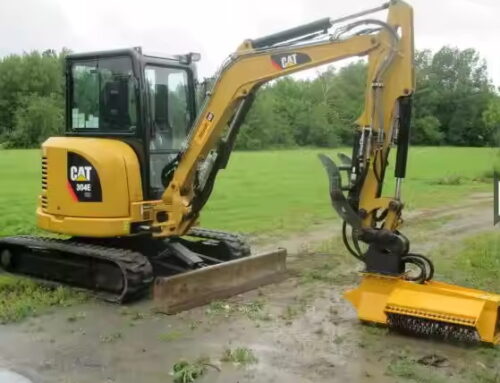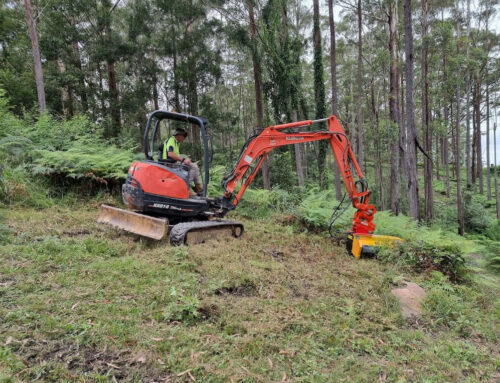-
The problem of the hydraulic breaker hammer itself
(1) Push the hydraulic breaker hammer drill rod hard to feel whether the piston is stuck, take out the drill rod to see if the piston is broken and stuck, and touch the surface to see if it is smooth. If it is stuck, it is a serious quality problem.
(2) Check the nitrogen, the pressure of the rear cylinder is different depending on the pressure, (such as the Shuishan series 13-16KG/CM. The Furukawa series has 6, 9, 11KG/CM). The accumulator is 60-75 catties. Insufficient gas in the rear cylinder will cause the crushing speed to be too fast and weak. At this time, the low-pressure oil pipe jumps; When checking the gas of the accumulator, if there is hydraulic oil leaking from the gas nozzle, it means that the grinding plate of the nitrogen device is broken. Remove the bolts and replace them. Pay attention to the cleaning of the cavity. If the above reasons have been ruled out,
(3) Open the control valve, observe whether there are foreign objects (metal slag, rubber slag, plastic, etc.) stuck to the valve core, clean up and install.
-
The output pressure of the excavator is insufficient
(1) First, close the oil return pipeline and the oil outlet pipeline at the switch of the lower arm.
(2) Remove the safety relief valve and check the pressure before the relief valve (static pressure of the excavator). Observe whether the pressure on the pressure gauge is between 200-300.
(3) Install the safety relief valve, check the pressure behind the relief valve (static pressure of the excavator) after the switch of the lower arm, observe whether it is between 200-300, and confirm whether the safety valve is damaged.
(4) Open the oil return pipeline and the oil outlet pipeline, check the dynamic pressure of the hydraulic breaker hammer, and observe whether the pressure of the pressure gauge is within the rated driving oil pressure range specified by the breaker. Small hammer around 140, 180 for 20T, 200 for 30-50T
If the above pressure is normal, it means that the excavator itself is not faulty. Otherwise, adjust the pressure to the specified range.
-
Fault handling example 1. Sudden weakness when the hydraulic breaker hammer is working
(1) Check the pressure of the high and low nitrogen chambers, and add appropriate pressure at room temperature. (If there is no high-pressure accumulator, only check the low-pressure nitrogen chamber)
(2) Is there any abnormality in the operation of the hydraulic breaker hammer pressure valve? (There will be a sound if the pressure valve is damaged.) The pressure regulating valve is loose due to vibration. In this case, it is enough to adjust it back to the standard pressure.
(3) Is the output oil supply of the excavator normal? Compare whether the whole vehicle of the excavator slows down.
(4) The upper and lower sealing rings are worn and low energy is caused by pressure loss. (Whether there is hydraulic oil mixed in the rear body, whether there is oil leakage in the front body)
(5) Determine whether to work at high temperature.
-
Troubleshooting example 2. Irregular strikes when the hydraulic breaker hammer is working
(1) Check whether the nitrogen pressure is normal, and at the same time, pay attention to whether there is hydraulic oil in the nitrogen.
(2) Whether the frequency regulating valve is damaged.
(3) Whether the control valve is issued.
(4) Whether the oil output of the excavator is stable.
(5) Whether the pressure regulating valve is half working and half not working.
(6) High temperature operation leads to pressure loss and rise in air pressure of the rear body, resulting in failure.
(7) The electromagnetic valve of the breaker is damaged or the wire is short-circuited.
(8) The pressure regulating valve is damaged.
(9) The multi-way valve of the excavator is faulty.
(10) The control valve is stuck. the
(11) The piston is damaged.
(12) The sealing ring is damaged, resulting in pressure loss.
(13) The piston cylinder is severely strained. the
-
Troubleshooting Example 4: Cannot strike at all
1) No high-pressure oil flow in the high-pressure pipeline
a. The shut-off valve is closed, open the shut-off valve
b. The oil inlet and outlet hoses are connected incorrectly, adjust them and reconnect them
c. The connection of the multi-way control valve is wrong, adjust it and reconnect
d. Insufficient hydraulic oil, replenish hydraulic oil
e. Adjust the overflow valve for hydraulic problems, and readjust
f. The performance of the hydraulic pump is degraded, repair or replace the hydraulic pump
g. The nitrogen chamber pressure is abnormal, adjust the nitrogen pressure
h. The nitrogen chamber is filled with hydraulic oil, replace the repair kit
i. Piston, oil cylinder, control valve strained —–repair or replace, and check the filter and hydraulic oil, replace if necessary
-
Troubleshooting Example 5: Stop for a while and then strike again
(1) The pressure of the nitrogen chamber is abnormal —– adjust the pressure of the nitrogen chamber
(2) Piston, oil cylinder, control valve strained – repair or replace, and check the filter and hydraulic oil, replace if necessary
-
Troubleshooting Example 6: Only hit once, and it will not move
(1) The shut-off valve is closed ——- open the shut-off valve
(2) The main oil return pipe is not connected to the fuel tank, and the oil return resistance is large, so connect the main oil return pipe to the fuel tank
-
Troubleshooting example seven:
1) When the hydraulic breaker hammer is installed, the number of strikes is small
a. The overflow valve is not adjusted properly — re-connect the meter to adjust.
b.The performance of the hydraulic pump is degraded——check and repair or replace the hydraulic pump
c. the pressure of the nitrogen chamber is incorrect —— adjust to the specified pressure
d. The connection of the oil return pipe is incorrect ——- connect the oil return pipe to the fuel tank
2) Use gradually less
a. The shut-off valve is closed due to vibration —– open the shut-off valve
b.The oil supply of the pump is not enough—-check and repair or replace the hydraulic pump
c. Leakage of the relief valve – re-adjust the pressure after cleaning or replacement
d. the amount of hydraulic oil is not enough —– add hydraulic oil









Leave A Comment